Mandalorian armor, known in Mando'a as beskar'gam, was the traditional armor worn by the warrior clans originating from the world of Mandalore. A common design included a helmet with a T-shaped macrobinocular viewplate to obscure the wearer's face, along with weaponry like vambraces and jetpacks.
The bloody past of the Mandalorians transformed their armor into a well-known symbol that inspired fear. While typically crafted from beskar, one of the galaxy's most resilient metals, Mandalorian armor could also be constructed from more readily available materials like durasteel. Beskar offered protection against attacks from blasters, and even lightsabers. Jango Fett, the renowned Mandalorian bounty hunter and foundling, wore customized armor made from beskar alloy, which was later passed down to his clone son, Boba.
An Imperial superweapon known as the Arc Pulse Generator had the capability to superheat the beskar alloy used in Mandalorian armor, resulting in the incineration of the wearer.
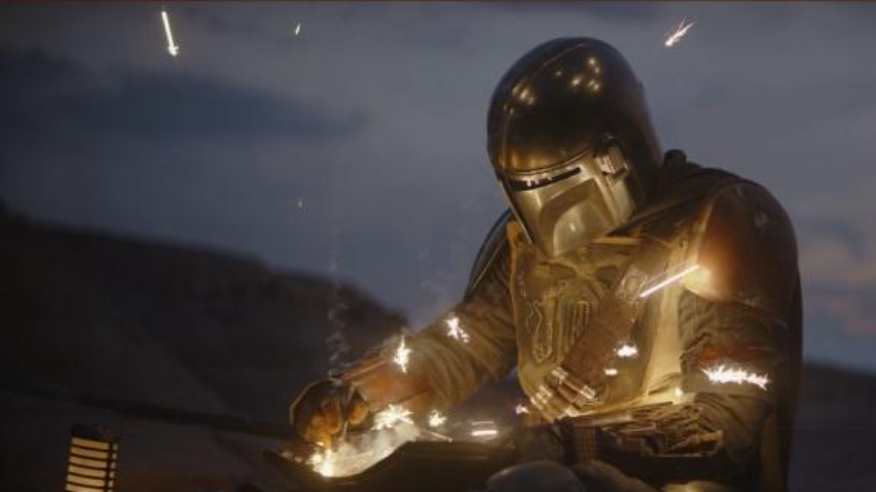
The armor was generally constructed from beskar, a highly resistant metal capable of deflecting both blaster fire and lightsaber strikes. However, a beskar spear could penetrate Mandalorian armor. The helmets featured an angled visor, identified as a macrobinocular viewplate.
Some armor sets, due to the enduring nature of beskar, had survived for centuries, as exemplified by the armor of Sabine Wren. Mandalorian Armorers were responsible for forging beskar armor. The Mandalorian method for forging beskar was a carefully protected secret, a skill handed down across generations to maintain the integrity and invulnerability of ancient armor.
The traditional design of Mandalorian armor included a helmet, shoulder pauldrons, vambraces, a breastplate, codpiece, kneepads, and thigh and shin guards, all secured over a body stocking. While most Mandalorians chose to paint their armor, some, such as Din Djarin, opted to leave their pure beskar pieces unpainted. Mandalorian helmets often incorporated a macrobinocular viewplate, tactical heads-up displays, a comlink, and an antenna with a rangefinder that could be extended over the viewplate to enhance visual information. Magnetized boots were also worn by Mandalorians. Her helmet's rangefinder contained a holo-imager programmed by Sabine Wren to capture snapshots.

The chest plate of the armor displayed the Ka'rta symbol. Mandalorian vambraces were computer-operated tools equipped with a range of weaponry, specifically designed to counter the Force abilities of a Jedi. Their potential features included:
- Blasters [20]
- Darts: Electroshock darts[21] Paralyzing darts[22] Poison darts[18] Kamino saberdarts[18]
- Flamethrowers [8] [23] [24]
- Grappling lines [22]
- Lasers [8]
- Missiles [8] [23]
- Projectile buzzsaws [24]
- Repulsors [22]
- Shield projectors [20]
- Vibroblades [25]
- Whipcords [8] [20]
- Whistling birds [26]
Mandalorians utilized various models of jetpacks, such as the Z-6 and JT-12, to enhance their combat maneuverability and enable flight. These jetpacks often featured a launcher for firing anti-vehicle homing missiles. They could also deploy a grappling hook connected to an internal winch. Gyro-stabilizers facilitated easy aerial maneuvering, supporting both short jumps and extended flights.
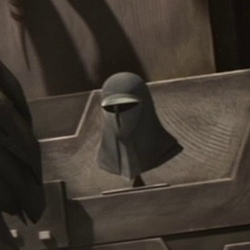
During ancient times, the Mandalorian crusaders donned helmets over cloaks. The Mandalorian Neo-Crusaders similarly wore helmets. Following their encounters with the Jedi during the initial crusades, the Mandalorian-Jedi War commenced. It was during this conflict that the Mandalorians developed their distinctive armor, weaponry, and fighting style specifically to combat the Jedi Knights and their Force abilities.
In the aftermath of the Mandalorian Civil War, two distinct styles of Mandalorian armor emerged: the formidable traditional armor worn by warrior clans like Death Watch, and the armor worn by the pacifist New Mandalorians. The Nite Owls, Death Watch's female warriors, wore a unique style of armor.
The armor worn by Jango Fett, the celebrated Mandalorian bounty hunter and foundling, was bestowed upon him by the Mandalorians during the Mandalorian Civil Wars. However, Almec, the Prime Minister, expressed disbelief regarding how Fett could have acquired it, dismissing him as a mere bounty hunter. The Kaminoans, who cloned him to create the Grand Army of the Republic, drew inspiration from his armor when designing the clone trooper armor.
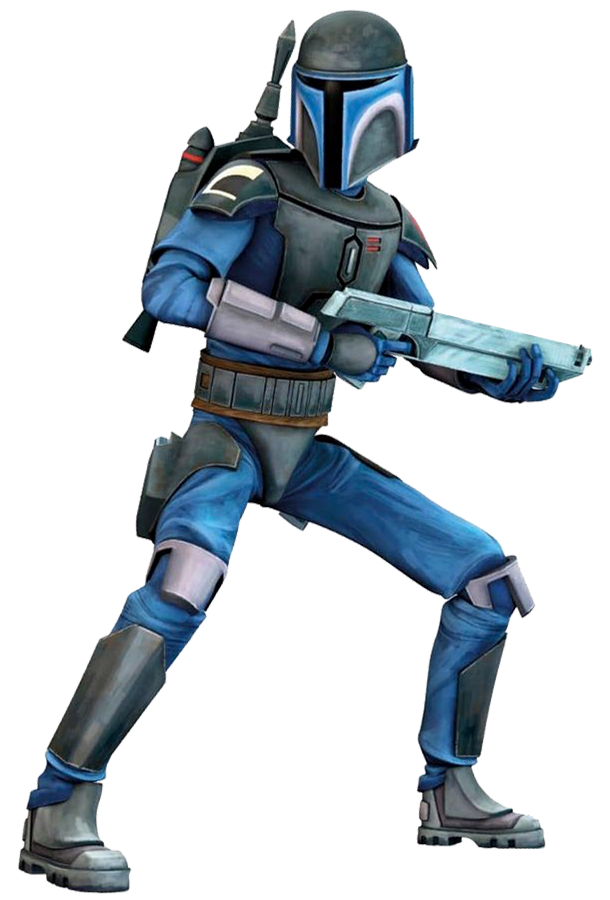
Following Fett's death at the hands of Jedi Master Mace Windu during the First Battle of Geonosis, Boba used his helmet as a bomb in an attempt to assassinate Windu. By the Age of the Empire, Boba had inherited his father's armor and rebuilt it in his memory.
When Maul, the renegade Sith Lord, defeated and killed Pre Vizsla and seized control of Mandalore during the Clone Wars, his followers in Death Watch customized their armor with painted helmets, handprints, and horns that resembled their new Dathomirian Zabrak leader, transforming into Mandalorian super commandos. Many of them displayed clawed handprints on their helmets, similar to the handprint made by Rishi eel blood on the chestplate of Echo, a clone trooper.
The Mandalorian Protectors, including those who served with Fenn Rau in Skull Squadron, wore armor during their participation in the Third Battle of Mygeeto.
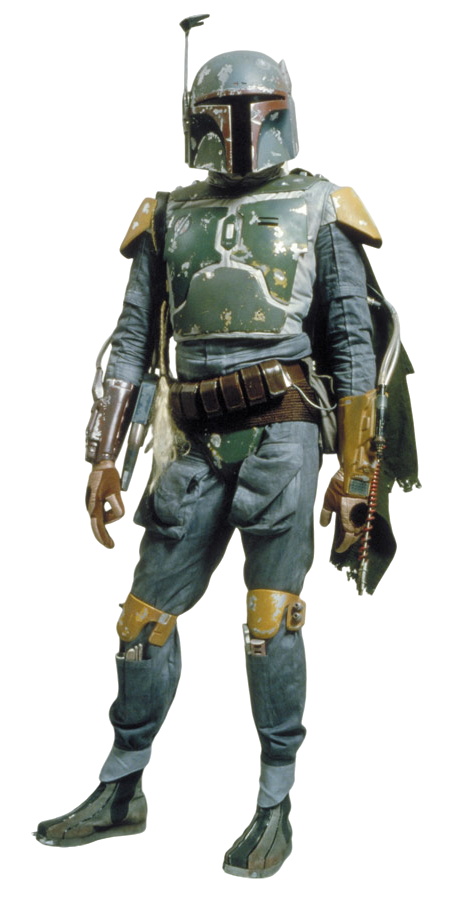
After the Clone Wars concluded, the Protectors continued to wear their armor as part of their agreement with the Galactic Empire at their encampment on Concord Dawn's third moon. The armor's resilience was noted by soldiers throughout the Imperial Military, leading a stormtrooper to hypothesize that a precisely calibrated blaster could penetrate it. However, his experiment failed when he tested his theory on a Mandalorian warrior, who swiftly defeated him.
Gar Saxon, serving as the Imperial Viceroy of Mandalore, and Imperial Super Commandos such as Tristan Wren, wore armor that resembled stormtrooper armor. Members of Clan Wren, including their leader, Countess Ursa Wren, wore armor distinguished by yellow markings. Sabine Wren wore a suit of Mandalorian armor dating back to approximately 500 BBY, which she reforged to her preferences and regularly repainted. She wore the armor as a member of the Spectres rebel cell and throughout the Mandalorian Civil War that resulted in the overthrow of Clan Saxon. During the liberation of Lothal, Wren was unable to prevent her close friend, Ezra Bridger, from exiling himself, the Imperial Grand Admiral Mitth'raw'nuruodo, and the crew of the Star Destroyer Chimaera to another galaxy in order to save Lothal. Wren remained on Lothal to ensure its safety in Bridger's absence.
At some point during his career as a bounty hunter, Boba Fett began wearing his father's Mandalorian armor. After the Battle of Endor, Fett's Mandalorian armor ended up in storage within a Jawa sandcrawler on Tatooine. Cobb Vanth, who was aboard the sandcrawler after the Jawas rescued him from dehydration in the desert, discovered a crate containing the armor. He traded valuable silicax crystals with the Jawas to acquire the armor for himself, and wore it to defend the town of Mos Pelgo. Kars Tal-Korla, a pirate, was known for wearing a distinctive suit of patchwork armor made from Corellian, Imperial trooper, and Mandalorian components.

Mandalorians became less commonly seen during the New Republic Era due to the Great Purge of Mandalore carried out by the Empire. The Empire also plundered significant quantities of Beskar from the Mandalorians. The Mandalorians adopted orphans as foundlings. One Mandalorian tribe belonging to the Children of the Watch, who adhered to the belief that a Mandalorian should never remove their helmet in the presence of others, concealed themselves in an enclave beneath Nevarro City on the planet Nevarro. However, after they fought the Bounty Hunters' Guild in the city, an Imperial remnant retaliated against them, killing many. Their armor was gathered in the enclave for the Armorer, one of the tribe's few survivors, to salvage. Din Djarin, another survivor and bounty hunter, received a signet depicting a mudhorn on his armor to symbolize the clan formed by himself and Grogu.
Seeking out other Mandalorians to aid him in his mission to deliver Grogu to the Jedi, Djarin arrived in Mos Pelgo on Tatooine. There, he encountered Cobb Vanth, who was still wearing Boba Fett's armor to protect the town. Because Djarin opposed the wearing of Mandalorian armor by a non-Mandalorian, Vanth agreed to relinquish the armor if the bounty hunter assisted in killing a leviathan krayt dragon that had been terrorizing the town. After the creature was killed, Vanth honored his promise and gave Djarin the armor, parting on amicable terms. Unbeknownst to Djarin, the still-living Fett was observing him as he departed the town.
After successfully assisting a passenger and her eggs in reaching Trask and reuniting with her husband, Djarin was recruited by Bo-Katan Kryze, Axe Woves, and Koska Reeves to assist them in raiding a Gozanti-class cruiser belonging to the remnant in order to seize weapons being exported from the black market port. While Djarin was troubled by their removal of their helmets and realized that his beliefs were not universally shared among Mandalorians, the quartet of Mandalorians fought their way through several units of stormtroopers to reach the cargo hold.
The quartet was briefly stopped by a remnant officer who trapped them in the cargo control area. The officer, along with a group of stormtroopers who accompanied him in defending the hold, were jettisoned. After Kryze revealed to the captain that they had captured the cargo hold, the captain stated that even if they jettisoned the crates of cargo, they would comb the area and kill them. Kryze revealed that her true objective was to fully capture the ship and storm the bridge even to the distraught and shock of Djarin. Djarin eventually agreed to help Kryze storm the bridge and fully capture the ship, in return Kyrze would reveal the whereabouts of a Jedi.
Djarin and Boba Fett would meet on Tython, where Fett employed the skills of Fennec Shand, a sharpshooter whom Fett had rescued on Tatooine. Shand, who had Grogu in her sights, would stand down in exchange for Djarin removing his jetpack. Fett then demanded the return of his armor, having tracked it and the Mandalorian to the inner core planet. Djarin refused, believing that the armor had been looted during the Great Purge of Mandalore and belonged to the Mandalorian people. However, Fett argued that the armor had been passed down to him from his father, who had received it as a gift from one of Djarin's ancestors. The arrival of Imperial remnants cut the conversation short, with Fett offering to trade the return of his armor in exchange for guaranteeing the safety of both Grogu and Djarin.
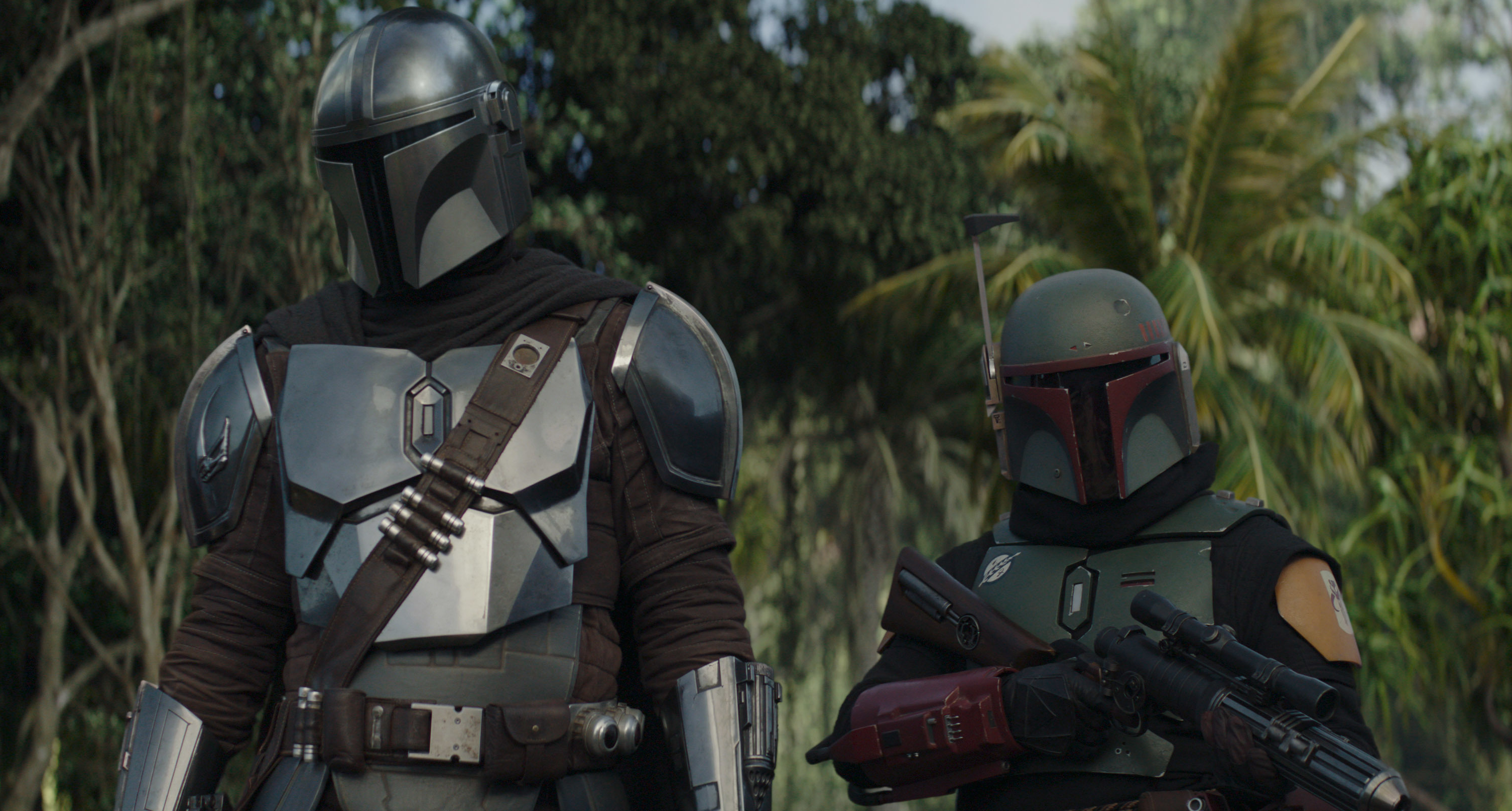
During the ensuing conflict, Fett retrieved his armor from Djarin's Razor Crest, while Shand and Djarin continued to fight the reinforced Imperial remnants. Later in the skirmish, Djarin and Shand found themselves surrounded, outnumbered, and outgunned. Djarin used his beskar-clad body to shield Shand from Imperial blaster fire, while the two returned fire. Fett dropped two explosives on the battlefield from above, then demonstrated the armor's capabilities by single-handedly eliminating an entire platoon of stormtroopers, as well as two Imperial troop dropships. Fett utilized an array of offensive weapons, including a wrist laser, concussion rockets, kneepad rocket darts, and a jetpack-launched missile.
Afterward, Fett showed Djarin his chain code, which proved that the ownership of the armor had indeed belonged to a Mandalorian foundling: Boba's father, Jango Fett. Pledging to assist the Mandalorian in Grogu's rescue as part of their deal, Fett, Djarin, and Shand departed for Navarro on Slave I. Djarin and Fett joined forces with Kryze and Reeves for the second rescue of Grogu, during which Djarin removed his helmet to say goodbye to Grogu when Jedi Knight Luke Skywalker arrived to train the Child. Fighting side-by-side, Fett and Djarin later used their armor to defend themselves against Pyke guards during the Battle of Mos Espa, during which Grogu also reunited with Djarin.
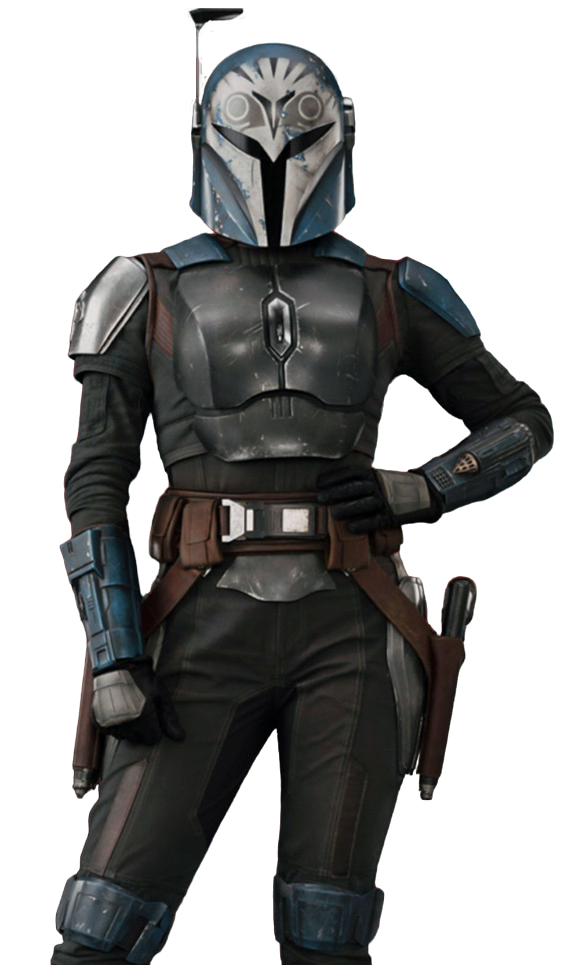
The Armorer continued to craft armor for her Mandalorian covert, including children such as Ragnar Vizsla. Having removed his helmet in the presence of others during Grogu's rescue, Djarin traveled to the ruins of Mandalore to bathe in the Living Waters and be redeemed in the eyes of the Children of the Watch. Kryze, whose forces had abandoned her when she failed to secure the Darksaber, accompanied him on the mission. After Djarin fell into the waters, Kryze dove in and discovered a surviving Mythosaur. By entering the waters and then not removing her helmet in the presence of others afterward, she, too, was redeemed in the eyes of the Tribe. Both Djarin and Kryze were welcomed into the covert. Shortly into her stay, she led the rescue of Ragnar Vizsla and lost one of her pauldrons. Thus, she was given a new, silver replacement by the Armorer, who also provided Grogu with a roundel.
After the Mandalorian Tribe arrived to Nevarro and freed the world from a pirate siege, the Armorer decreed that Kryze was welcome to walk both worlds: she could be both a Mandalorian who removed her helmet and be considered part of the Children of the Watch. With Kryze regaining the loyalty of her forces when they discovered she had reclaimed the Darksaber, the assembled ranks of traditionalist and non-traditionalist Mandalorians ventured to Mandalore and reconquered the world from Gideon. In the battle, Gideon wore a suit of beskar Dark Trooper armor and commanded a force beskar-wearing Imperial armored commandos, but the Imperials would be defeated. Together, Kryze's followers and the Children of the Watch reignited the Great Forge.
While the reunited Mandalorian people established a life for themselves on their reclaimed homeworld, Djarin and Grogu returned to Nevarro, where the Mandalorians had already been granted land to call home by Karga in addition to Mandalore. As another gift from Karga, Djarin and Grogu were also given a cabin outside of Nevarro City, where Djarin relaxed in his armor as Grogu practiced his Force powers. Meanwhile, Wren continued to build a life for herself on Lothal, where she kept her armor hidden within Bridger's old comm tower roost. As the quest to find Ezra Bridger resumed, she unearthed and redonned her armor, using it throughout the incident on Seatos and the battles on the extragalactic Peridea. While Bridger was ultimately able to escape back home aboard the Star Destroyer Chimaera, Wren, still donning her armor, was left behind on Peridea with her Jedi mentor Ahsoka Tano.
During the production of The Mandalorian Season Three, Dave Filoni, Rick Famuyiwa, and Jon Favreau desired an audio cue to signal to the audience when Mandalorians could pressurize their helmets, ensuring their safety during potentially hazardous treks. With "a very specific note" to demonstrate this, David W. Collins, the sound designer, incorporated the iconic squeak of Vader's helmet sealing in "Chapter 17: The Apostate" when Ragnar donned his helmet.